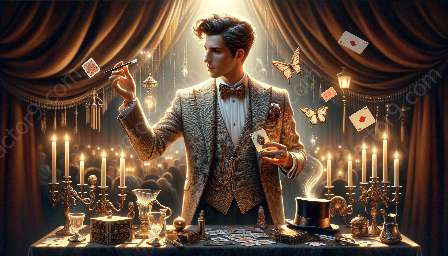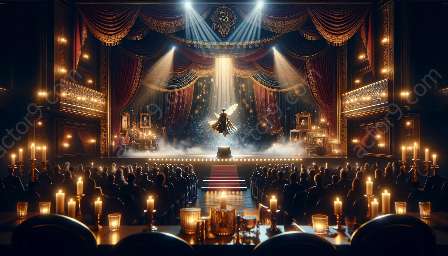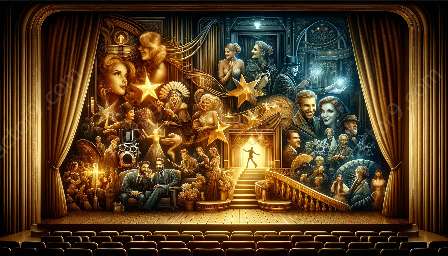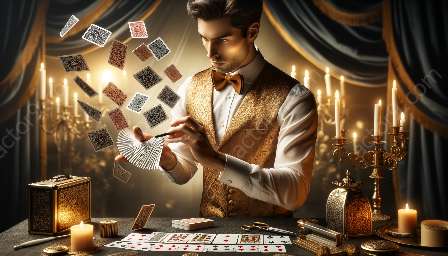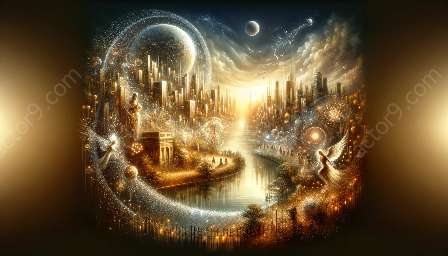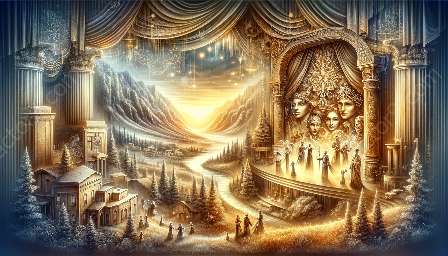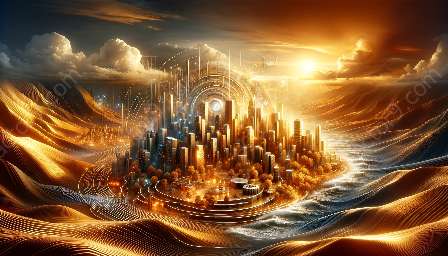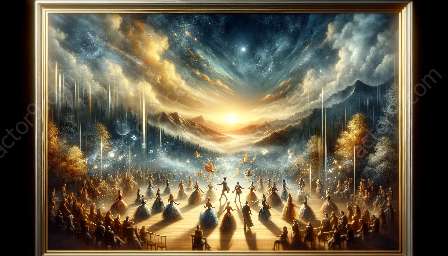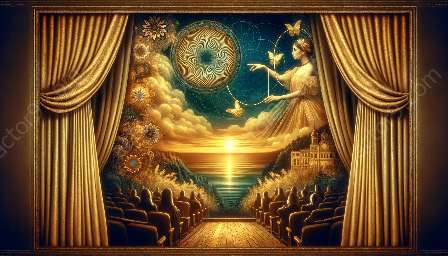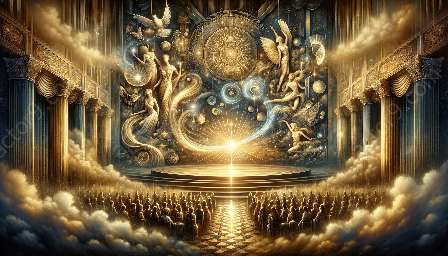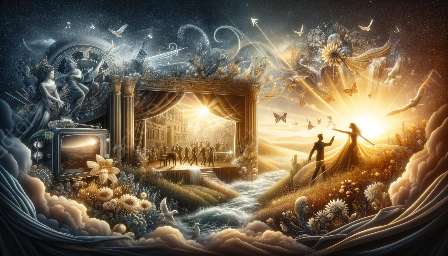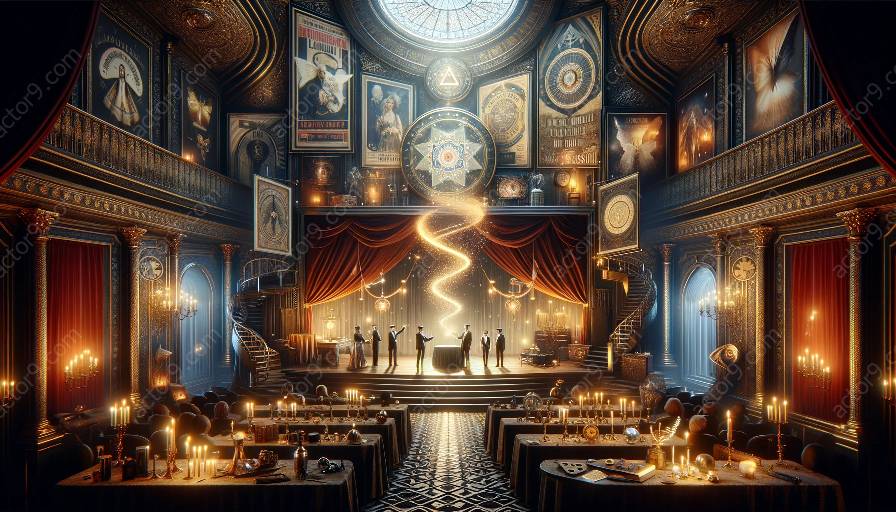From ancient times to the modern stage, the history of magic and illusion has captivated and entertained audiences around the world. This article explores the fascinating development of magic and illusion, its profound impact on the performing arts, and its enduring influence on acting and theater.
The Origins of Magic and Illusion
Magic and illusion have a rich and enigmatic history that dates back to ancient civilizations. The art of magic was deeply intertwined with religious and mystical practices, with early magicians often revered as powerful figures with supernatural abilities.
One of the earliest recorded instances of magic and illusion can be traced back to ancient Egypt, where magicians and illusionists performed feats that astounded and mystified onlookers. Hieroglyphs and paintings depict magicians performing sleight of hand and miraculous tricks, demonstrating the enduring appeal of magic throughout history.
The Renaissance of Magic
The Renaissance period witnessed a resurgence of interest in magic and illusion, with the art form evolving and gaining popularity across Europe. Magicians and illusionists honed their craft, developing new techniques and innovations that continued to bewilder and mesmerize audiences.
Notably, during the Renaissance, the practice of magic expanded beyond mere entertainment, with influential figures such as John Dee and Giordano Bruno incorporating magical rituals and symbolism into their philosophical and mystical pursuits. This period marked a profound shift in the perception of magic, as it became intertwined with intellectual and spiritual exploration.
The Golden Age of Magic
The 19th and early 20th centuries heralded the golden age of magic, characterized by spectacular illusions, grand stage performances, and the rise of iconic magicians such as Harry Houdini and Howard Thurston. Magicians achieved celebrity status, captivating audiences with elaborate stage spectacles and unprecedented feats of escapology and sleight of hand.
Stagecraft and theatrical innovation played a significant role during this period, as magicians integrated advanced technology and special effects into their performances, setting the stage for the seamless integration of magic and theater.
Magic and the Performing Arts
As magic and illusion continued to evolve, their influence extended into the realm of the performing arts, shaping the world of acting and theater in profound ways. Magicians and illusionists collaborated with playwrights and directors, incorporating magical elements into theatrical productions to captivate and astonish audiences.
The symbiotic relationship between magic and theater gave rise to groundbreaking productions that integrated illusion, storytelling, and dramatic performance, blurring the lines between reality and fantasy on stage.
The Modern Era and Beyond
In the modern era, magic and illusion remain as captivating and relevant as ever, with contemporary magicians pushing the boundaries of the art form through innovative performances and reinvention. The influence of magic on the performing arts continues to be felt, with the seamless integration of illusion and acting captivating audiences in the digital age.
As technology and special effects continue to advance, magicians and illusionists are at the forefront of creating immersive and unforgettable theatrical experiences, ensuring that the enduring legacy of magic and illusion will continue to enrich the world of acting and theater for generations to come.
Topic
Influence of Magic on Visual and Performance Art
View details
Technological Advancements in Magic and Illusion
View details
Connections Between Magic and Philosophical Thought
View details
Magic and Illusion in Scientific and Mathematical Concepts
View details
Cultural Perceptions of Illusionists and Magicians
View details
Magic and Illusion in Storytelling and Folklore
View details
Magic and Illusion in Psychological and Supernatural Beliefs
View details
Impact of Magic on Exploration and Cross-Cultural Encounters
View details
Magic and Illusion in Architectural and Engineering Marvels
View details
Societal Attitudes toward Magic and Illusion in Historical Events
View details
Role of Magic and Illusion in Early Concepts of Modern Theater
View details
Questions
How have magical performances evolved over time?
View details
What role did magic play in ancient civilizations?
View details
How did magic and illusion influence early theatrical performances?
View details
Who were some notable historical figures in the world of magic and illusion?
View details
What were the societal perceptions of magic and illusion in different historical periods?
View details
How did magic performances impact popular culture in various historical eras?
View details
How did magic and illusion shape religious practices and beliefs in different civilizations?
View details
What were the key developments in the history of magical props and devices?
View details
How did magic and illusion contribute to the evolution of storytelling in theatre?
View details
What were the connections between magic and illusion and ancient myths and legends?
View details
What impact did magic and illusion have on early literature and poetry?
View details
How did magic and illusion influence early forms of visual art and performance art?
View details
What were the key cultural exchanges that shaped the development of magic and illusion?
View details
What were the social and political implications of magic and illusion in different historical contexts?
View details
How were magic and illusion used in rituals and ceremonies throughout history?
View details
What were the ethical considerations surrounding magical performances in various historical periods?
View details
How did technological advancements influence the practice of magic and illusion in different eras?
View details
What were the contributions of women to the history of magic and illusion?
View details
How did magic and illusion influence early forms of dramatic performance?
View details
What were the connections between magic and illusion and philosophical thought throughout history?
View details
How did magic and illusion impact the development of early scientific and mathematical concepts?
View details
What were the cultural perceptions of illusionists and magicians in different global regions?
View details
How did magic and illusion intersect with traditional storytelling and folklore?
View details
What were the connections between magic and illusion and political propaganda in history?
View details
What were some notable controversies and scandals in the history of magic and illusion?
View details
How did magic and illusion influence the development of early forms of entertainment media?
View details
What were the connections between magic and illusion and early forms of music and dance?
View details
How did magic and illusion shape the development of early forms of psychological and supernatural beliefs?
View details
What impact did magic and illusion have on early exploration and cross-cultural encounters?
View details
How did magic and illusion influence the development of architectural and engineering marvels?
View details
What were the societal attitudes toward magic and illusion during major historical events and movements?
View details
What was the role of magic and illusion in shaping the early concepts of modern theater and performance arts?
View details


